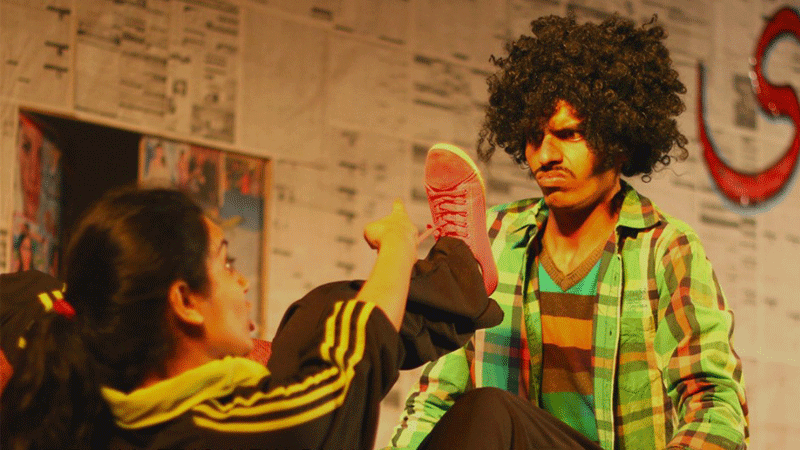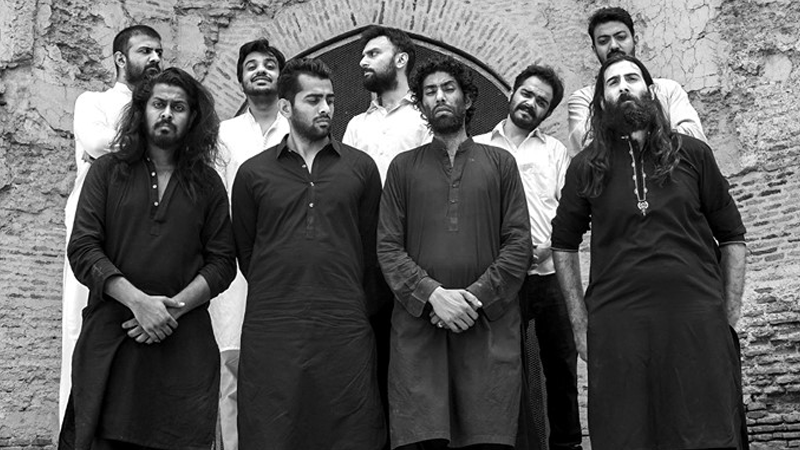 This play is basically an adaptation of one of the Hollywood classic ’12 Angry Men’ and was performed by Drama Ed Theatre Production House at Alhamra Arts Council Thursday to Saturday and was directed by Shah Fahad.
This play is basically an adaptation of one of the Hollywood classic ’12 Angry Men’ and was performed by Drama Ed Theatre Production House at Alhamra Arts Council Thursday to Saturday and was directed by Shah Fahad.
Efforts, merits considerable acclaims but a play that focuses on psychological conflict requires tedious preparation and meticulous performances in to hold the audience’s attention by maintaining its aesthetic integrity, otherwise, there are greater chances of the audience to loose their interest in it, very quickly. Looking at this perspective, yes the play was a success as the house was full for all three days. People showed much interest in watching and coming out of their homes and listen to what one has to say. However, a packed auditorium on all three days is not a criterion for artistic expertise or philosophical sophistication.
To be very honest and sincere with words, I will certainly like to admit that I had not seen the film before watching this play and it was more like an intentional decision because I wanted to see this whole play as an original so that my judgment may not get inflicted by the prerequisites. So I decided that I will be watching this movie after watching this play and this is what I did. Loosely speaking, the hierarchy of the poetics of any play are plot, script, acting, the setting of the play and most importantly its direction.
Similarly, if this play has to go through the analysis procedure of criticism it has to be seen through the filters of the critic’s glasses whose judgments are purely critical in its nature, in which, it will be analyzed whether this play has remained successful in satisfying the needs, so that this play could become a complete play or are there several of the factors that could have done in a better way.
As a short introduction to the play; it is a play consisting of mainly 10 characters, nine of them are the members of jury that would be deciding the verdict and one of the characters is performed by “Maryam” who is the symbolic representation of the lady who is the subject of the court. Starting and the ending of the play is dedicated to the kathak dancers crew who were representing the state of the court and its proceedings. In the beginning, the jury is convinced and has already made the decision that the lady is guilty while there is one of the members who believes that the court does not have enough support from the evidences to claim a straight judgment that is why he claimed that they should reconsider it. This character named as “Muhammad Shafi” plays a vital role in it as he is the one who turns the table around and bring the jury to the discussion and to reconsider their judgment.
On a critical note there are few of the things that can be discussed critically. For example, just after the play’s beginning – which is with the kathak oriented dance performers, led by “Maryam” – it depicts the court hearing, which is a creative idea and appreciable but on the very next scene the jury enters into the allocated room where they would be discussing the whole proceeding. Nine people come to the stage and just try to manage it so that they can sit over there, in this they actually wasted 20 seconds, while they do not utter any dialogue and do not even make any impactful gesture at all.
This particular scene was delayed and had no grasp over the audience. Starting of the play is always a very important constituent in the play and they just let it go and the reason is that audience are always in the judging mood whenever a play starts and if you are going to lose the first impression of the play, it will be quite a daring act by the audience if they still manages themselves to keep their eyes and mind open to the stage. Secondly, acting in the play – pretty ordinary, as a whole, still there were few of the characters that actually performed really well. The protagonist of the play, the junior kid, as he was the one who was leading the whole situation or the whole act, he had no authority in its attitude while performing the character; it was demanded by his character. His role is to inaugurate the discussion on the topic, he wants the jury to reconsider their verdict what they have already decided and he remains successful in it by the end of the play. On the other side, the Brahman guy who was wearing the orange, traditional attire of the Brahmins performed really well but could not match the standard acting by the Rajasthani guy.

Moreover, direction of the play is really good and impressive except above mentioned points. Direction remains simply successful in explaining and depicting the emotional and psychological constraints between the characters. For example; how, Shafi Mohammed, presents that human mind is quite apt towards the logical understanding of the instances as he remains indignant in persuading the jury members who are inflicted by the pre-requisite ideas and judgments. This is not the only instant of the direction’s success, but also there are many other moments in which it is portrayed that how human mind actually accepts the reason. for instance; every character suffice its reasoning or changes its mind over the instances when the ‘reason’ actually able to counter one’s prejudices and also at the point, when reason actually crafts out a way in which one could find one’s self. So, the point of agreement comes, when reason actually counters their prejudices and becomes relatable to them. As concluding remarks, the play was basically a very simple adaptation of the film ’12 Angry Men, so if you have already watched the film, you may come out and say that actors portrayed the film well, only slightly making the story more cultured.
The writer can be reached at bukharu@live.com